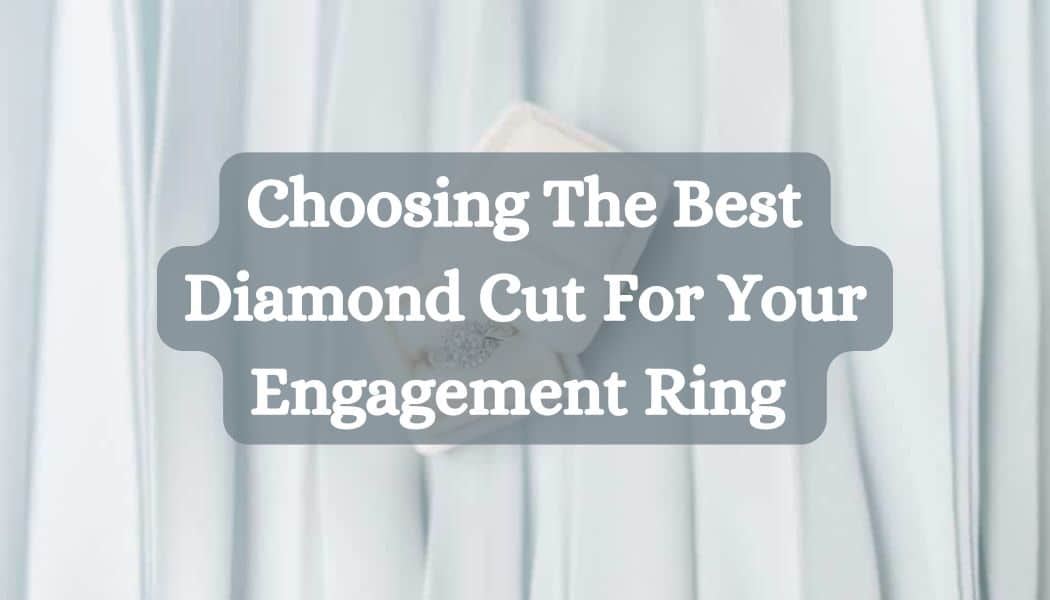
Table of Contents
Key Takeaways
- A diamond’s cut significantly affects how it interacts with light. This process dictates the stone’s appearance on the engagement ring and how it displays brilliance, fire, and scintillation.
- No single factor determines a diamond’s beauty. Diamond cutters and jewellers consider proportions, angles, and sizes to create exceptional stones.
- Traditional cuts provide timeless elegance. However, modern techniques can optimize a diamond’s performance under various light conditions.
- While it’s tempting to prioritize size over cut quality, investing in the latter often yields better results than choosing a larger stone with poor light performance.
- When choosing the proper cut, please consider how the stone catches light as you move and how it complements your hand.
- A diamond’s specifications matter. But at the end of the day, your connection to the stone should guide your final decision to your engagement ring.
Picking the proper cut for your diamond engagement ring can be thrilling and overwhelming. Various online sources focus on the 4Cs: carat, clarity, colour, and cut. Of these aspects, choosing the perfect diamond cut is the most challenging, primarily because there are several factors to consider.
Understanding the intricacies of diamond cuts can make your journey smoother. Whether you’re planning to pop the question or helping someone choose their dream ring, this holds.
This comprehensive guide will cover everything you need to know about diamond cuts, from cut quality to popular and emerging styles and tips for making a confident choice.
The Art and Science Behind Diamond Cuts
Many confuse diamond cuts with shapes. In reality, though, they’re pretty different. The cut refers to how well a diamond has been shaped and faceted from its rough state into a finished stone. This process dramatically affects how this precious stone interacts with light.
Light hits a well-cut diamond and travels through the stone, reflecting its internal surfaces before bouncing back to your eye. This process creates three essential optical effects:
- Brightness or the total light reflected
- Fire or the dispersion of light into rainbow colours
- Scintillation or the pattern of light and dark areas that sparkles when the diamond moves
Simply put, the cut is the diamond’s ability to take the light that enters from above and return it in a dazzling facet pattern. Understanding these elements is crucial as we move along.
Essential Factors in Cut Quality
Understanding a diamond’s cut quality goes beyond checking a grade on a certificate. Much like a master sculptor works with marble, a skilled diamond cutter considers multiple factors in transforming rough diamond crystal into a breathtaking gem.
Table Size Relative to Diameter
The table, or your diamond’s most significant top facet, acts like a window into your stone’s soul. For instance, a well-proportioned table percentage for round-cut diamonds runs anywhere from 54 to 57 percent. This ratio ensures optimal light return while maintaining a pleasing visual balance. Too large a table can make your diamond appear glassy, while too small may reduce its sparkle.
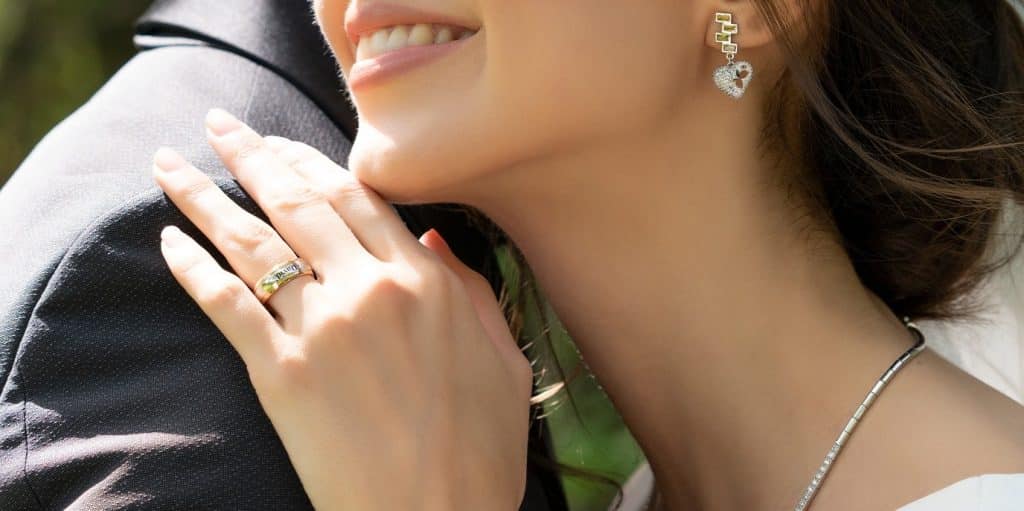
Crown Height and Angle
The diamond’s crown, which includes the table, is the most visible part of the stone. A properly angled crown would differ from one cut to another. Generally, an angle of 32 to 35 degrees creates a magical interplay between brightness and fire. Its height similarly affects how light disperses into rainbow colours. A shallow height might reduce its fire, while a steep crown could cause the stone’s appearance to darken.
Pavilion Depth and Angle
The pavilion is located in the lower section of the stone, below the girdle. It functions as a diamond’s light engine and determines how light reflects back to the eye. For optimal light return, an ideal angle is around 41 degrees. It might seem like a small thing, but even a small degree of variation can dramatically impact the stone’s sparkle.
Girdle Thickness
No, we’re not referring to a popular shapewear. We’re talking about the outermost edge of this gem. The distance between the crown and pavilion measures girdle thickness. This metric similarly affects light performance. To get the right thickness, look for a cut description that says ‘thin’ to ‘slightly thick.’
Culet Size
This tiny point at the bottom of your diamond, the culet, might seem insignificant. Still, it matters because it influences the stone’s durability, light performance, and appearance. For example, larger culets create a noticeable ‘fish eye’ effect when viewed from above.
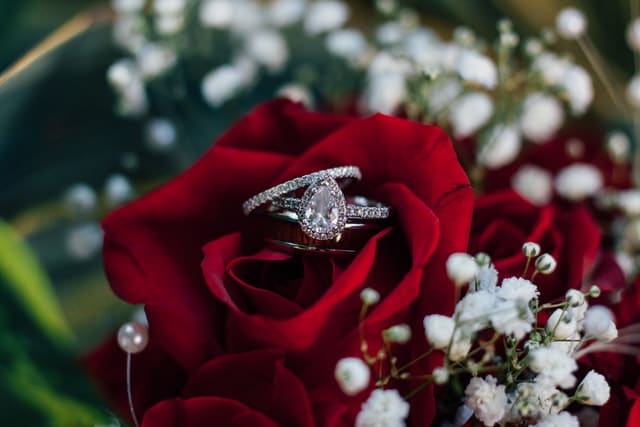
Brightness and Light Return
You want your diamond to create maximum reflection as light enters it. Superior cut quality carries at least 85% light return to make a coveted bright appearance. A well-cut stone maintains its brilliance even under fluorescent lights, so it’s good to test how your chosen gem performs under different lighting environments.
Fire and Spectral Colors
Have you ever noticed how a diamond sparkles and creates mesmerizing flashes of colour? That’s the ‘fire’ we mentioned earlier. Different cuts produce varying amounts of fire. A round brilliant cut diamond provides balanced fire, while oval cut diamonds show more colourful flashes due to their elongated shape.
Scintillation and Sparkle Pattern
Watch how your diamond comes alive with movement. Quality scintillation creates an even pattern of bright and dark areas that shift or move, looking like it’s ‘dancing.’ Pay attention to whether the sparkle appears as crisp, defined flashes or seems more diffused.
Symmetry of Light Reflection
Perfect symmetry ensures even light distribution throughout your diamond. When examining your stone, look for consistent patterns in the facets. High-quality symmetry should create clean and sharp reflections.
These factors determine how well your diamond engagement ring will perform. A professional diamond cutter studies them to ensure everything blends seamlessly—as you would when choosing your wedding accessories. In short, it takes time and careful consideration to separate a good diamond from an exceptional one.
Traditional Diamond Cuts
The first ever diamond engagement ring was made in 1477. It featured a point-cut diamond—a misnomer since the stone wasn’t actually cut but polished to follow the rough diamond’s natural shape. Regardless, the art of diamond-cutting has been around for centuries and gave birth to these time-tested styles:
Cushion Cut Diamond
Vintage romance meets modern brilliance in this traditional cut. And it’s easy to see why. Cushion cut diamond rings highlight the stone’s romantic appeal with the fire of contemporary cutting techniques. Its rounded corners and more significant facets create a distinctive pattern often described as ‘crushed ice’ or ‘rolling hills.’
The beauty of cushion diamonds lies in their individuality. No two stones look exactly alike, as variations in facet patterns and length-to-width donations can dramatically affect their appearance. Some display a hearts-and-arrows pattern similar to a round brilliant cut diamond, while others showcase a more vintage look with larger and chunkier facets.
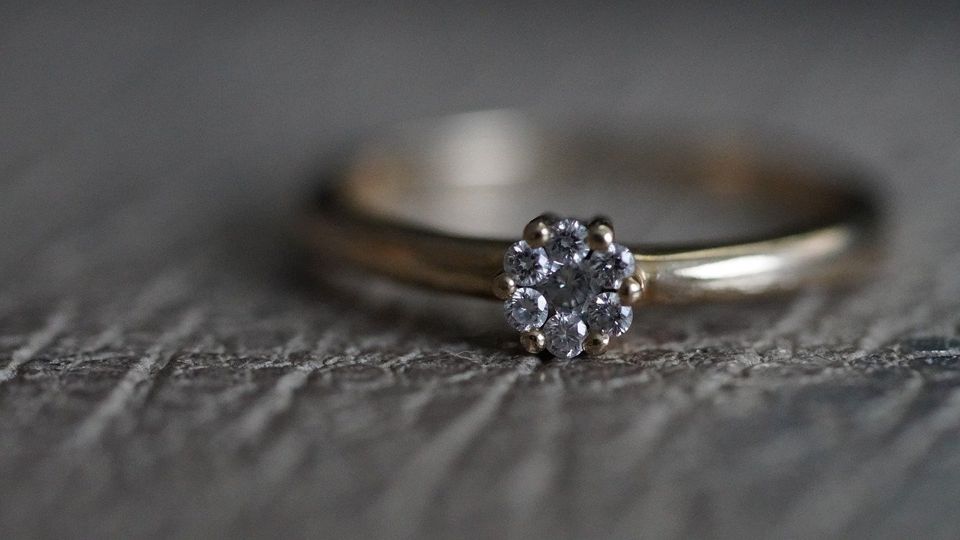
Round Brilliant Cut Diamond
Another time-tested classic, a round brilliant diamond has earned its status as a popular diamond cut for engagement rings—and for good reason. With up to 58 facets arranged in a cone shape, this cut maximizes a diamond’s natural brilliance. Round-cut diamonds can return up to 90% of the light that enters them, creating a coveted sparkle that seems to dance with every movement.
It’s a choice for wearers looking for versatility. A brilliant-cut diamond complements virtually any engagement ring setting, from classic solitaires to elaborate vintage-inspired designs. Choosing this cut allows you to experiment with various options while guaranteeing your centrepiece will shine its brightest.
Princess Cut Diamond
The princess diamond cut is perfect for those seeking a modern alternative to round brilliant diamonds. This square-shaped gem features sharp corners and multiple facets arranged in a unique pyramidal shape. As such, it produces an impressive sparkle while maintaining clear lines.
What many don’t realize is that princess cuts are cost-effective. Compared to round brilliants, they retain more of the rough diamond’s original weight, making them more affordable per carat. There’s one caveat, though. Their sharp corners require proper protection in the setting to prevent chipping.
Oval and Pear Cut Diamond
Looking to maximize size and brilliance? Oval and pear diamond cuts deserve your attention. These elongated shapes create an illusion of a bigger stone than other cuts with the same carat weight. Even better, their added length can make your fingers appear slimmer and longer.
Oval and pear diamonds can likewise hide inclusions better than their round counterparts. Their shape disperses light differently, making minor imperfections less noticeable to the naked eye.
Asscher Cut Diamond
Created in 1902 by renowned diamond artisan Joseph Asscher, this cut features a distinctive square shape with a unique architectural pattern. The stone’s step cut and cropped corners create an octagonal design. An Asscher cut’s deep pavilion and high crown produce a fascinating hall of mirrors effect by mixing straight lines and dramatic flashes.
An asscher-cut diamond produces a vintage yet timeless glamour. While this may appeal to most, its open facets showcase the diamond’s internal characteristics more prominently than other styles, meaning any small inclusion may be visible to viewers.
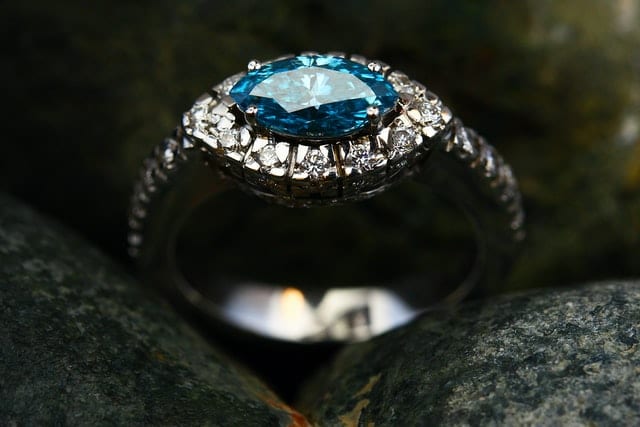
Emerald Cut Diamond
The emerald diamond cut screams sophisticated minimalism. Its rectangular shape with stepped facets creates an elegant sparkle distinct from brilliant cuts. When placed on top of an engagement ring, it makes dramatic flashes of light instead of the scattered sparkle of the latter.
Like the Asscher, this cut emphasizes a diamond’s clarity and colour. The clean lines and geometric precision make emerald cuts eye-catching in intricate ring settings, which were standard in the Art Deco era. However, the real magic lies in the stone’s proportions. A maximum length-to-width ratio of 1.75:1 works in most cases.
Radiant Cut Diamond
The radiant cut’s appeal lies in combining the shape of an emerald cut with the fire of a round, brilliant diamond. This relatively modern cut, developed in the 1970s, is a masterpiece that blends angular and brilliant cut facets to create exceptional sparkle. They’re sold in both square and rectangular shapes.
Unlike the princess cut, radiant cut gems are more resistant to chipping because their corners aren’t as sharp as the former. They’re exceptionally forgiving regarding colour, as their faceting pattern can mask tints—perfect for those seeking excellent value for money.
Marquise-Cut Diamond
The marquise cut traces its origins to King Louis XV of France, who is believed to have asked a diamond artisan to mimic the shape of his mistress’s lips. Besides its romantic history, a marquise cut diamond also offers greater value for money, as its elongated shape and pointed ends make the stone actually look bigger than it is.
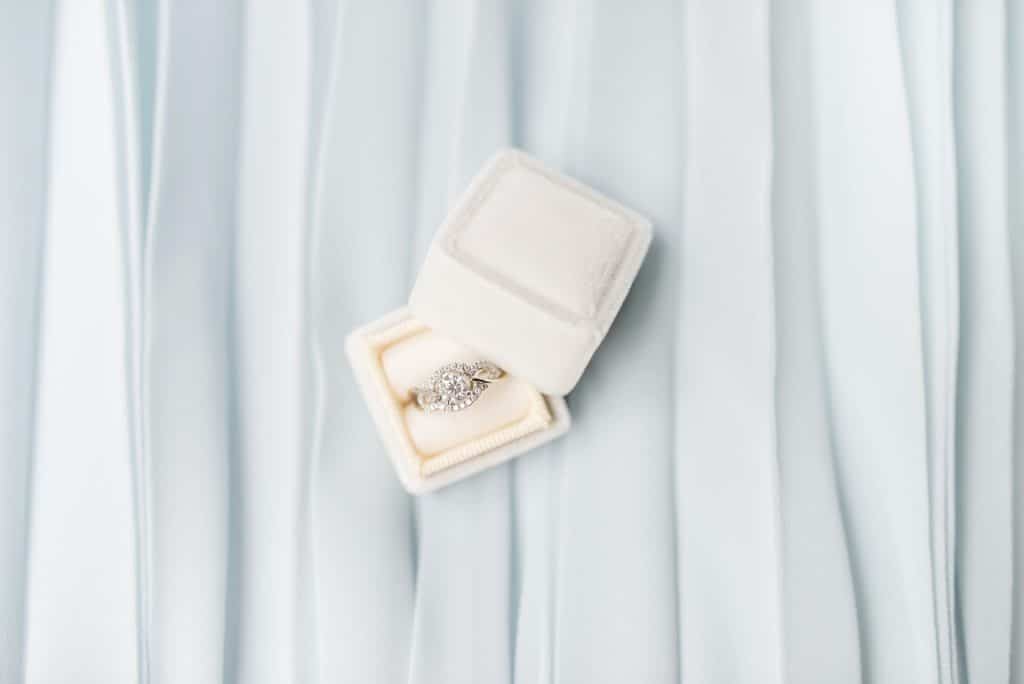
Emerging Cuts
While traditional styles remain popular, several modern variations have gained traction. For example, the modified brilliant cut optimizes a stone’s brilliance and fire. Originating from the round brilliant cut, modern technologies have enabled it to adopt various shapes—from heart, pear, oval, and marquise. Advances in diamond-cutting and growing methods likewise optimize a stone’s light performance regardless of its size and proportion.
Whether you prefer to stay traditional or embrace modern diamond cuts, the fundamental principles of what makes a diamond beautiful remain unchanged. It’s best to see the stone in person before making a decision.
Practical Tips for Selecting the Right Cut
Being confident about your choice requires more than basic theoretical knowledge. Knowing how to evaluate each cut in person can cement your choice. Here are some ways to make the selection process better:
- View the stones under different lighting conditions: Jewelry store lighting is designed to make every diamond sparkle its brightest. Check your gems under natural and fluorescent lighting. Rotate them to determine their performance with or without direct lighting.
- Compare similar cuts side by side: Context matters when selecting the best diamond cut your money can buy. Ask your jeweller to show you stones of the same shape but with different cut grades. Additionally, take a quick view of diamonds with varying table percentages and depth ratios. Comparing stones with crowns, pavilions, and angles can help spot subtle differences in overall appeal.
- Consider your lifestyle and hand movements: Your engagement ring should complement your daily activities and natural gestures. Observe how different cuts catch the light as you move. Likewise, think about how your activities and environments might affect them.
- Factor in your ring’s setting: Ensure the cut works well with your preferred prong configuration. Consider how different metal colours might affect the cut’s overall look. It’s best to discuss setting options early to avoid disappointment later.
- Document cut grades and measurements: Note your preferred cuts’ measurements and proportions and record the numbers in the grading report. Then, ask permission to take photos from different angles. Write your observations about sparkle, fire, and overall appeal. Sometimes, you might have to focus on cut quality and adjust to a lower carat, colour, or clarity grade for a flawless-looking piece.
Consumers spent USD$ 5,500 on average for an engagement ring in 2023, which is slightly lower than in 2021. But, as practical buyers would say, it’s not always about the money. Identify the characteristics that matter most to you to get the best value. More importantly, research price points across various retailers.
Conclusion
Understanding the nuances of a diamond’s light performance and cut quality provides a solid foundation for your choice. In doing so, you’ve already won half of the battle. Another critical piece of the puzzle is your connection with the stone itself. The best cut should ultimately capture your eye and heart, just like your significant other.
FAQ: Engagement Rings
Q: Does a higher price automatically mean a better diamond cut?
Not necessarily. While premium cuts often command higher prices, the relationship isn’t always linear. Some diamonds with slightly lower technical grades might appear more beautiful to the naked eye due to their unique light performance characteristics.
Q: Why are round brilliants more expensive than other cuts?
Round brilliant cuts typically cost more because they require sacrificing more of the rough diamond during cutting. The cutting process demands precise angles and symmetry to achieve optimal light performance. However, this “waste” translates into superior sparkle and brilliance, which explains why they remain the most popular choice despite the higher price point.













